Last Updated on May 22, 2024 by teamobn
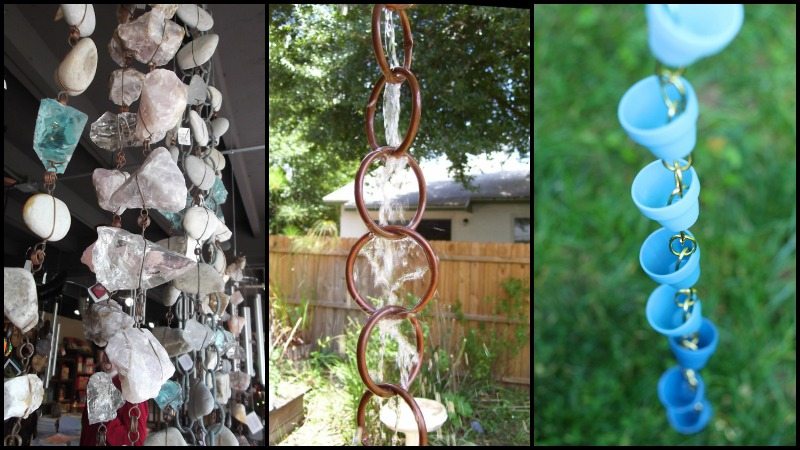
Need to have your downspout replaced? Instead of buying boring pipes, why not make rain chains using recycled materials?
Rain chains are a type of decorative downspout that capture and redirect rainwater from a roof. They are actually nothing new at all. The ancient Japanese and Chinese used them centuries ago.
The chains of the past were made from metal, stone, and glass. Today, you can get them in copper, aluminium, zinc, and brass. Rain chains come in a variety of shapes, sizes, and designs.
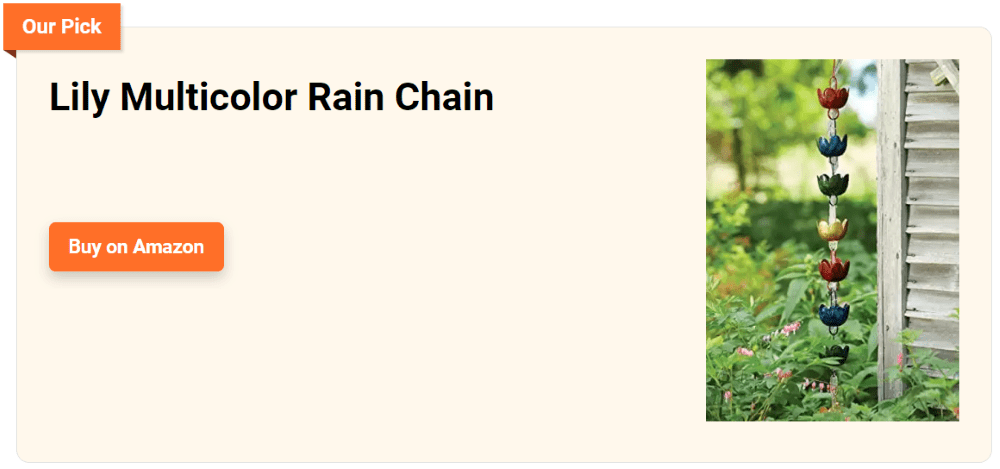
There are several materials for you to choose from- new or recycled- that can help reduce waste.
Take a look at our examples below and see what will suit your home the most!
Click on any image to start the lightbox display. Use your Esc key to close the lightbox. You can also view the images as a slideshow if you prefer ![]()
Rain Chain Ideas
DIY Ombre Chains
Rainbow Rain Chains (aka DIY Ombre Chains) is a decorative, cost-effective, and eco-friendly way to keep your garden green and pretty in a water-wise way. Use mini terra cotta pots and colour them with your excess paint for a more good-looking chain.
While they are normally used to funnel water from a rain barrel or roof gutter to the ground around a tree, they can also be used to catch rainwater from a downspout.
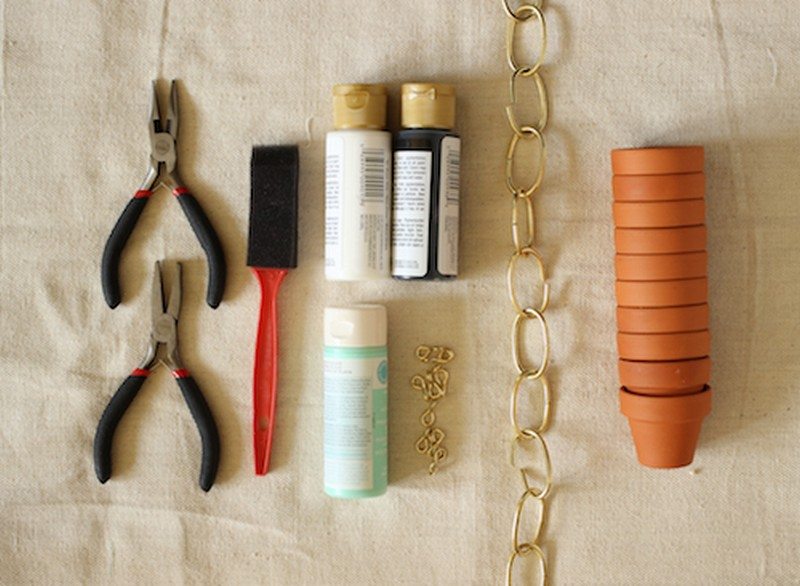
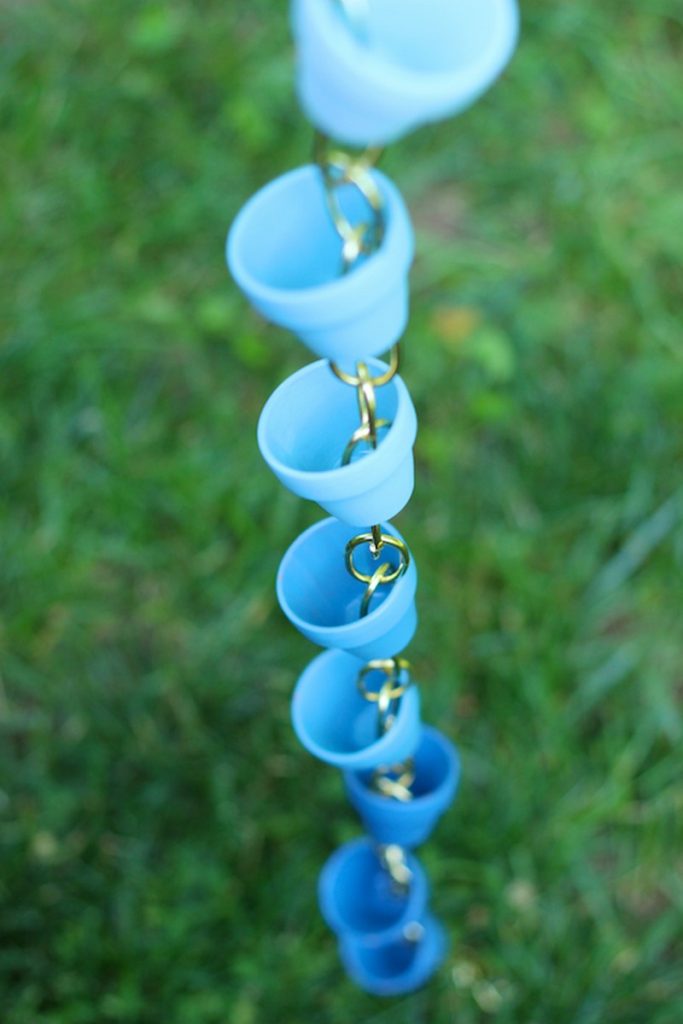
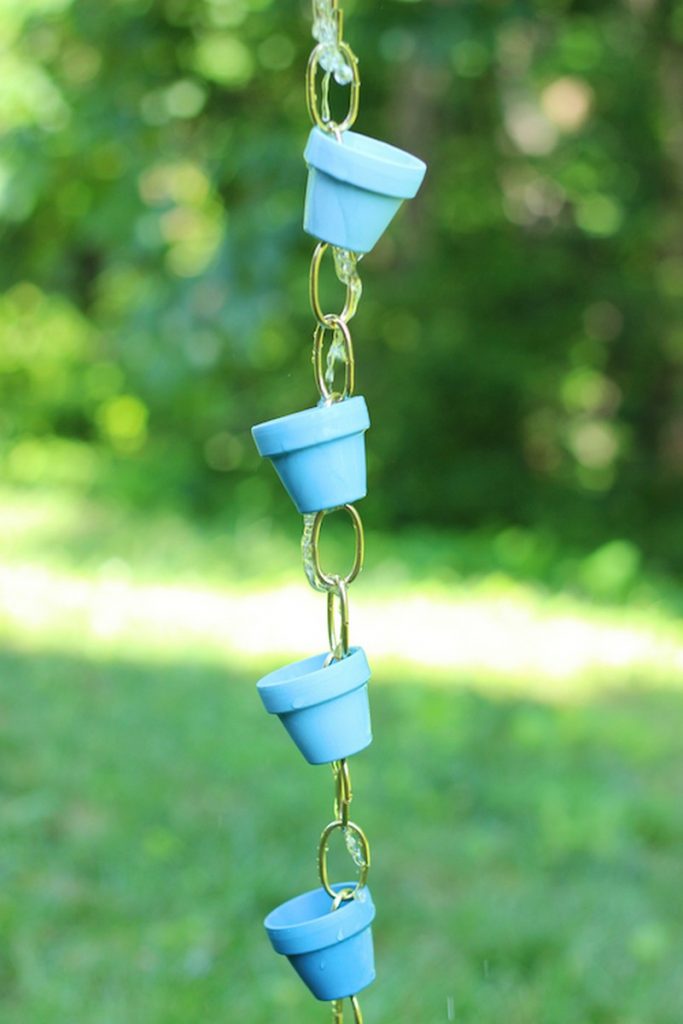
Copper
These copper rings came from a roll of copper refrigeration tubing. You can be more creative and make your own link patterns! Copper ring chains are a beautiful and unique way to add a real sense of beauty and elegance to your front yard.
These rain-chained rings are made up of various-sized copper rings that are connected together. The rings may vary in size, colour, and shape. These rings are placed on a long string and are hung on trees, or put onto a gutter to prevent leaves and other debris from clogging up the gutter.
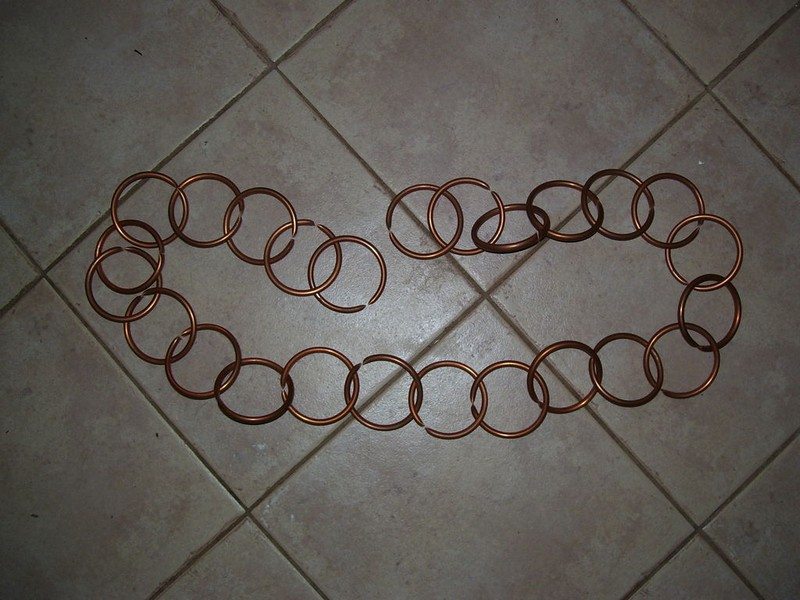
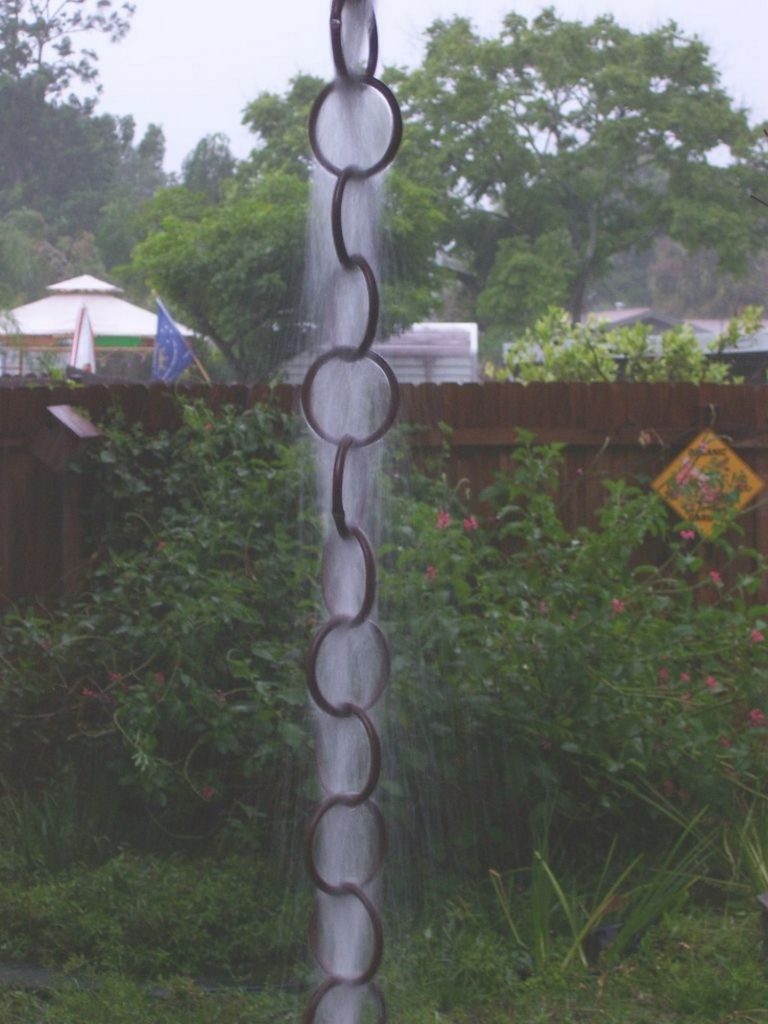
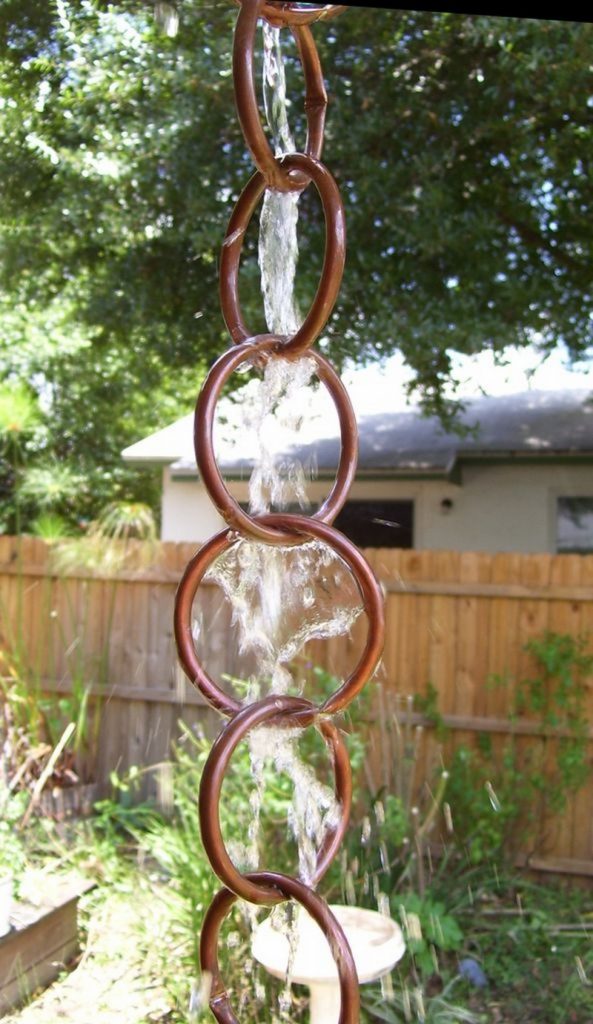
Stones
Sourcing and Selection: Begin by exploring local riverbeds, beaches, or garden centers to find a variety of stones with different textures, colors, and weights. Opt for smooth, flat stones for a uniform look or mix shapes for a more eclectic design.
Use sturdy, rust-resistant wire to tie the stones together. Consider using a drill to create small holes in each stone for a more secure attachment. Arrange them in a descending order of size to mimic natural water flow.
Incorporate colored glass or ceramic pieces between the stones to add a pop of color. This not only enhances the aesthetic appeal but also creates a beautiful play of light when water runs over them during a rainfall.
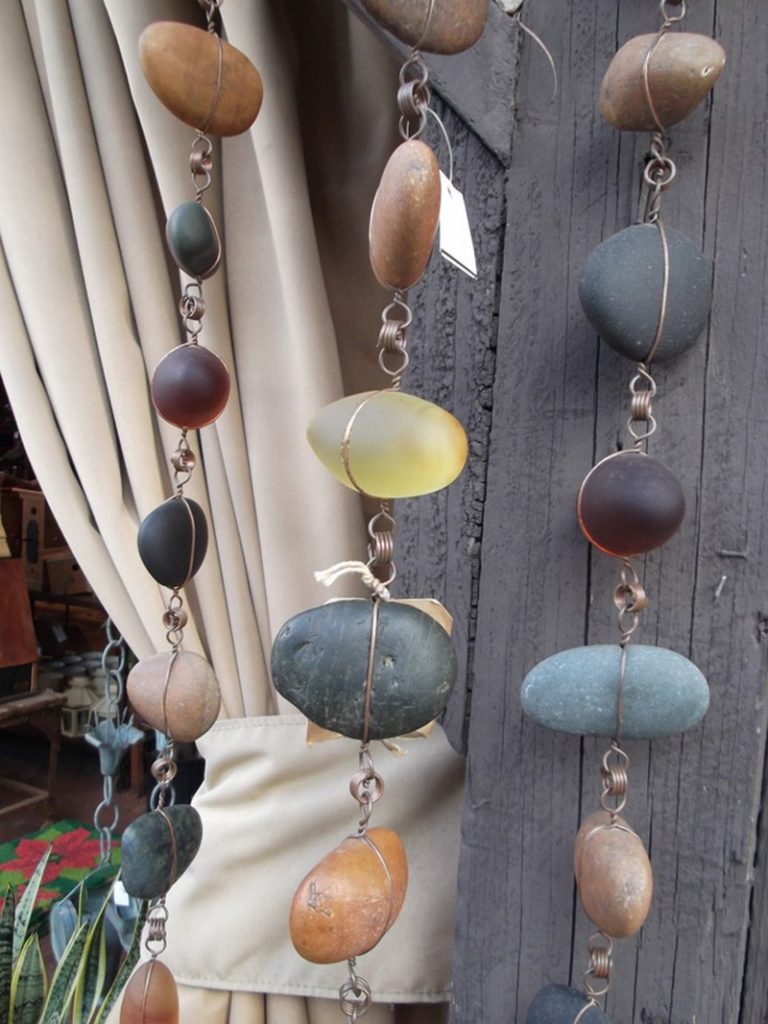
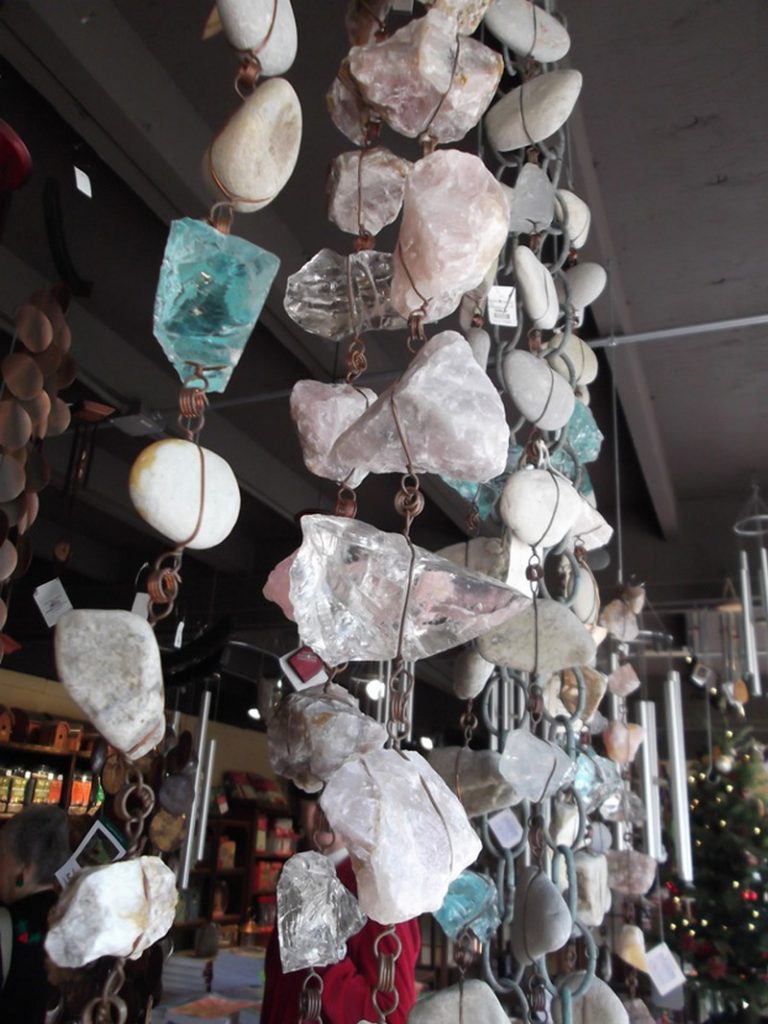
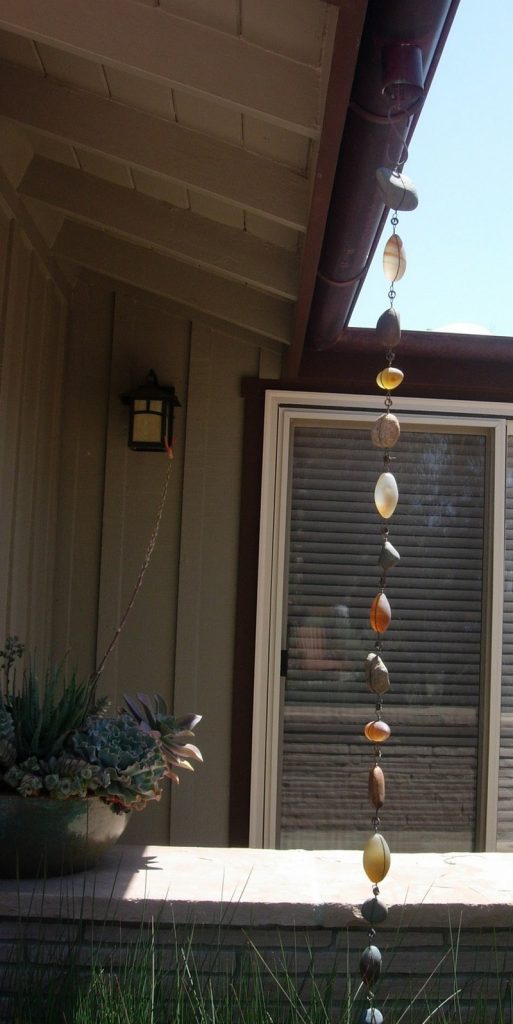
Buckets
Choosing Buckets: Use small, galvanized buckets or repurpose old tin cans or mason jars for a more vintage look. Ensure they are rust-proof to withstand the elements.
Attach the buckets at staggered heights to allow water to cascade from one to another, creating a melodious sound. This setup can also be functional for directing water into a rain barrel or watering system.
Paint the buckets in bright, cheerful colors or patterns to match your garden’s theme. You could also stencil numbers or symbols on each bucket to add a playful element.

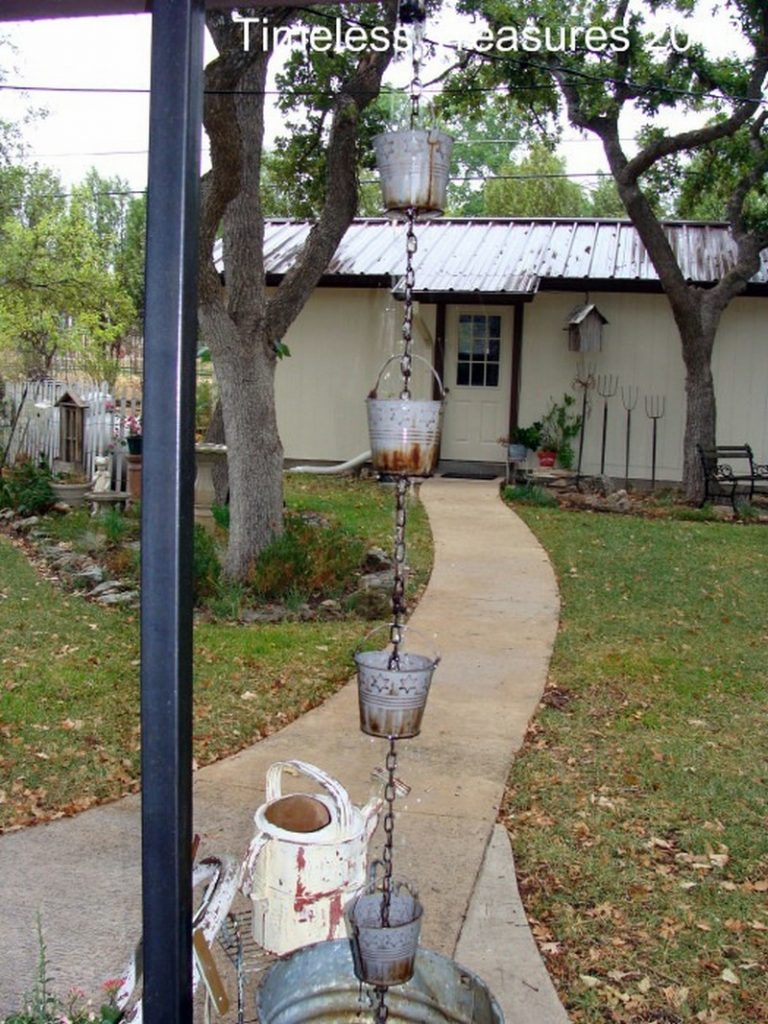
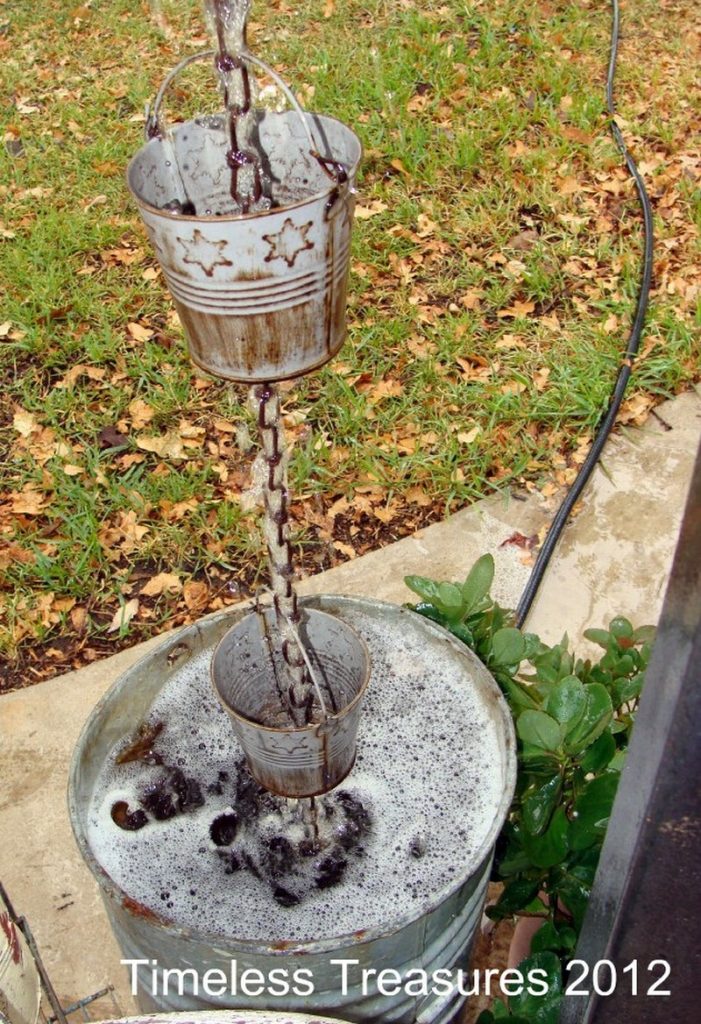
Silverware
Collect mismatched spoons, forks, and even small ladles from thrift stores or yard sales. The more varied, the better the visual and acoustic effect.
Bend the silverware slightly to create a better flow for the water. Attach each piece to a strong chain or durable string with secure loops.
For a whimsical twist, alternate the silverware with small bells or chimes that will ring gently in the wind or when touched by water. Consider using brightly polished or even silver-plated utensils for a more elegant look.
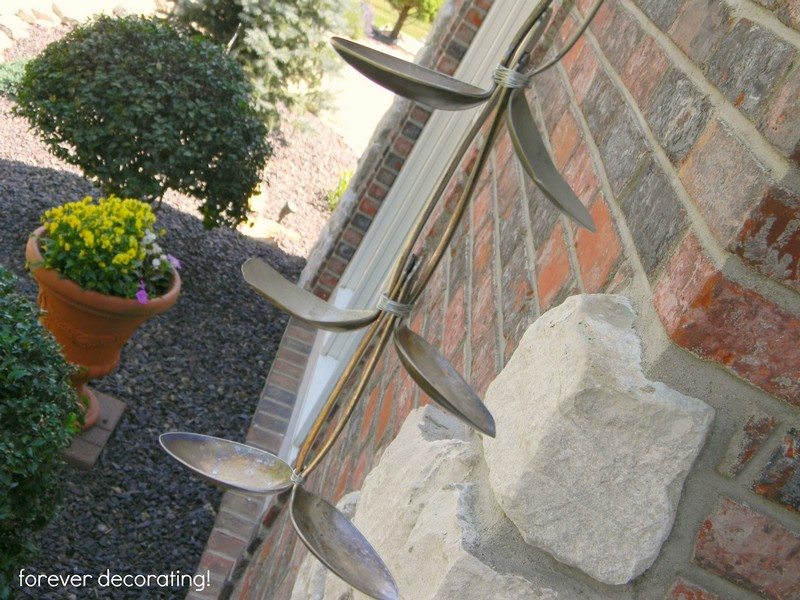
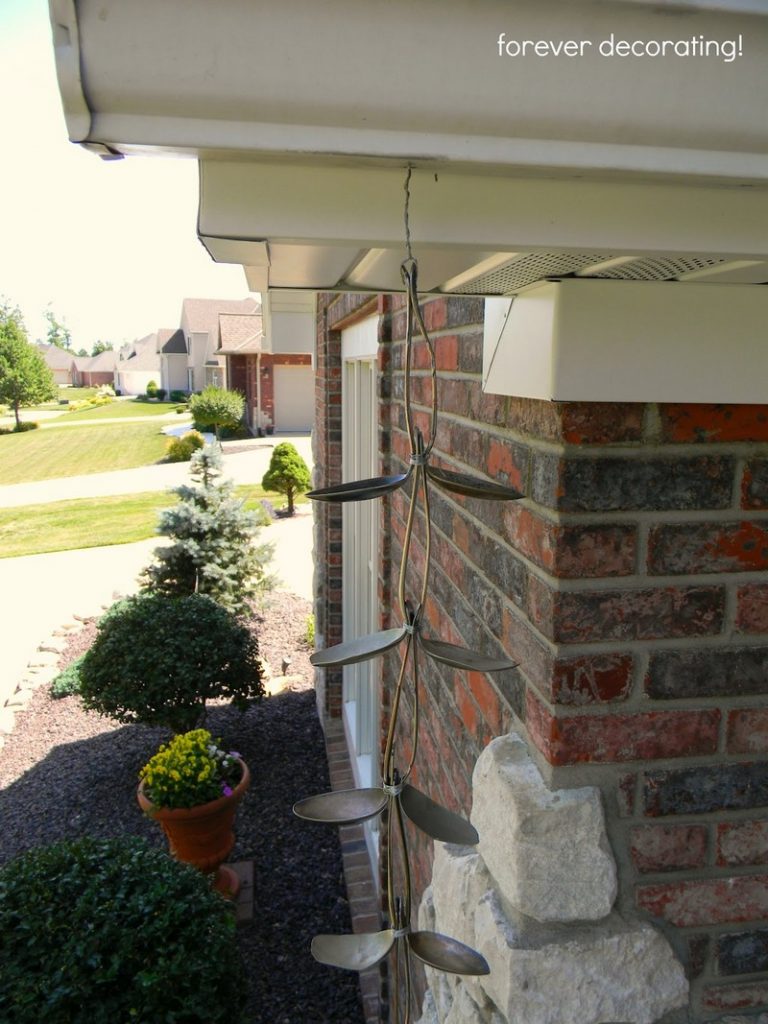
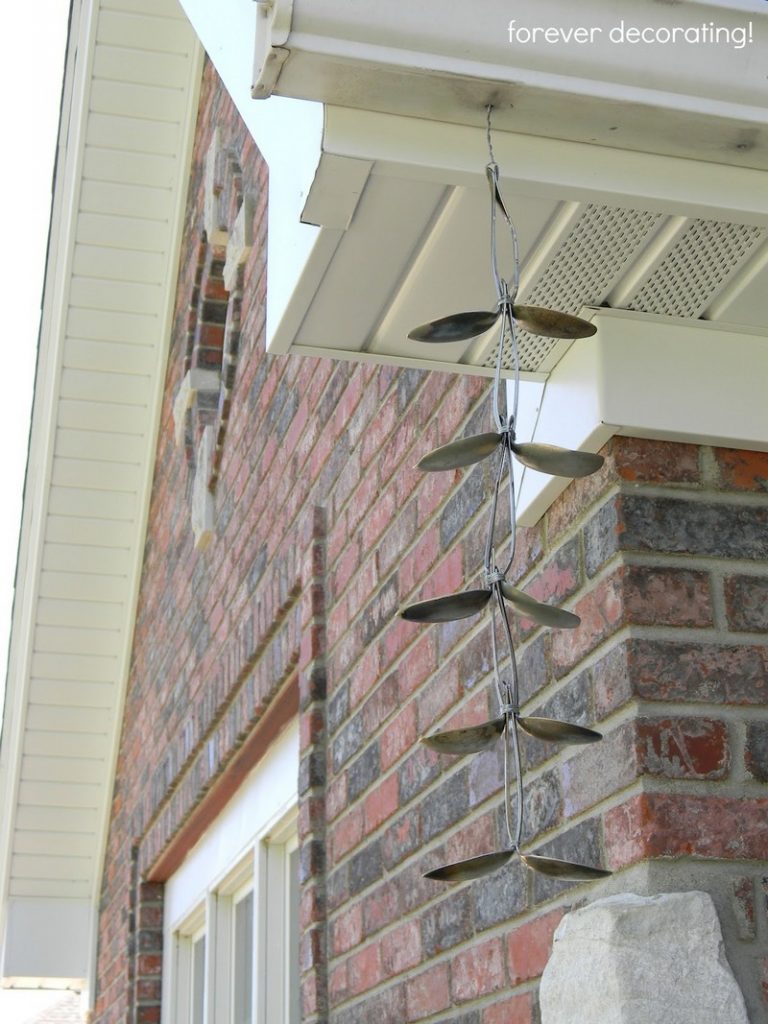
Wine Bottles
For those with a collection of empty wine bottles, transforming them into a chain can be a unique and environmentally friendly project. Start by safely cutting the glass bottles in half. The top part of the bottle, typically the neck, is ideal for creating a rain chain.
These segments can be strung together vertically, alternating the bottle tops by color or in a pattern to create a visually appealing effect. Ensure that the edges are smoothly sanded to prevent any injury. Additionally, consider adding LED string lights inside the bottles for a luminous effect during the evening.
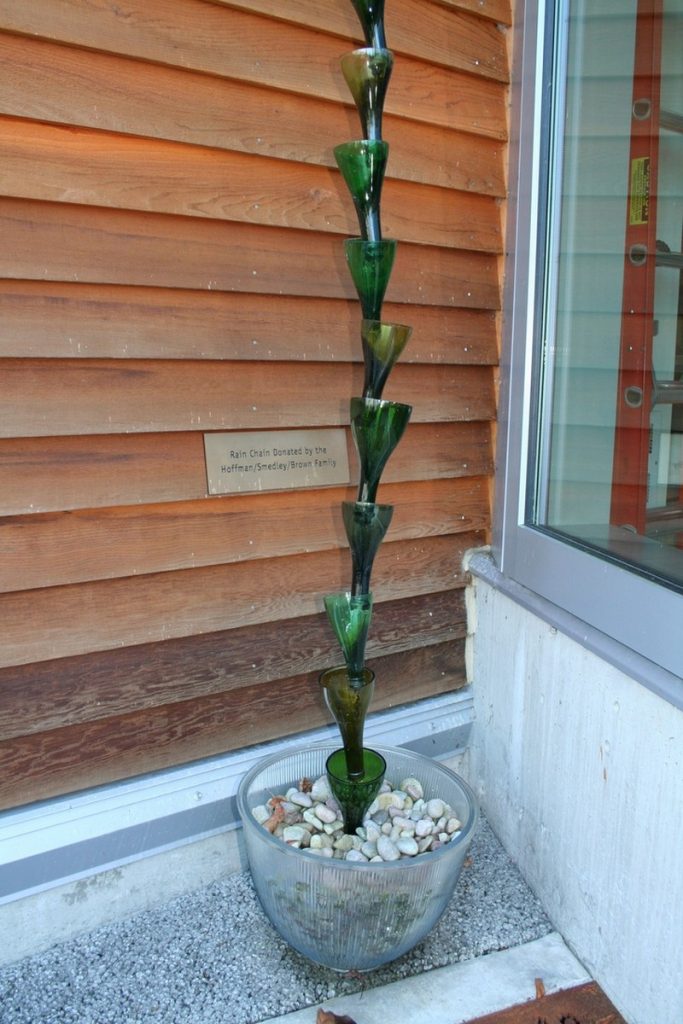
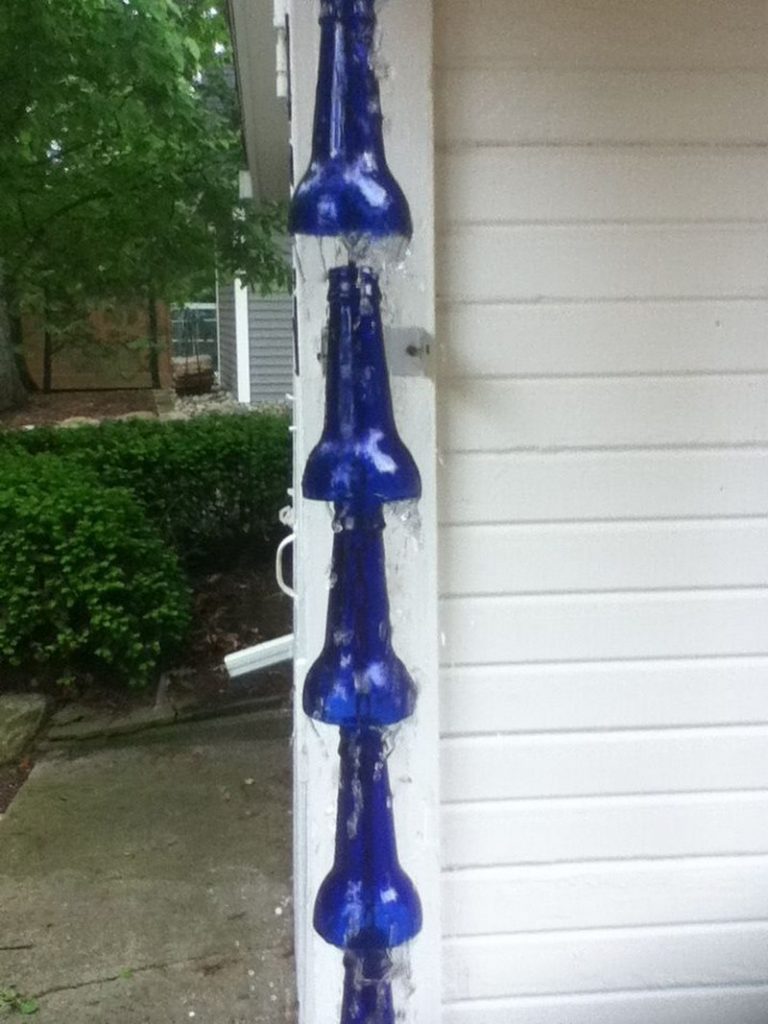
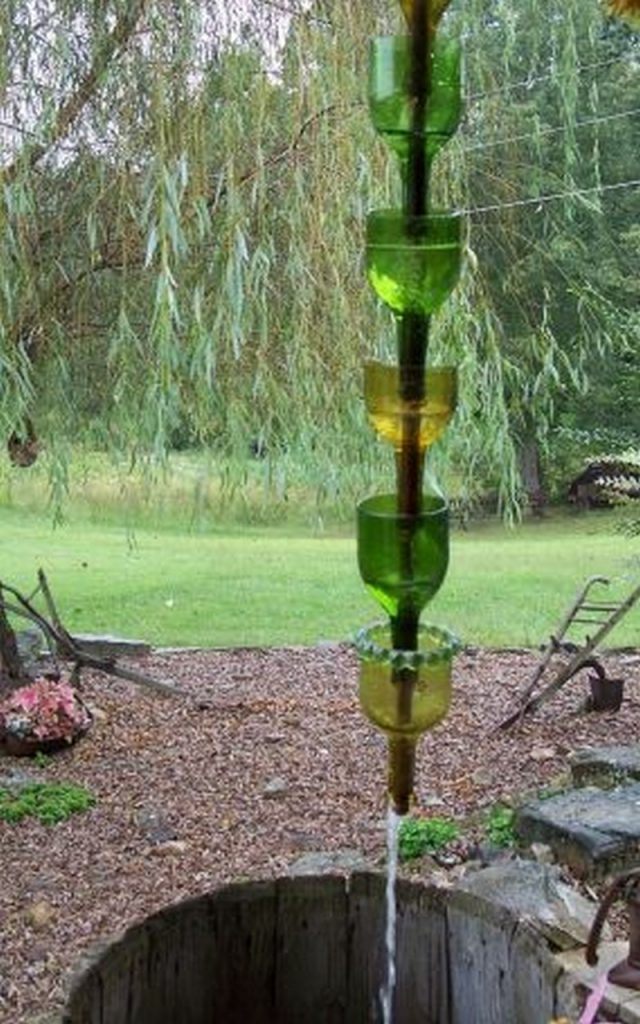
Metal /Brass
Utilizing metal or brass items, such as old chandeliers, to create a rain chain can add a touch of vintage elegance to your home’s exterior. Begin by disassembling any old metal or brass fixtures you have, such as lamp bases, chandelier arms, or decorative metal pieces.
Arrange these items in a sequence that allows rainwater to trickle down effectively, creating a soothing sound. To enhance durability and prevent rust, it may be beneficial to apply a clear protective coating to the metal pieces. This not only preserves the material but also maintains its aesthetic appeal over time.
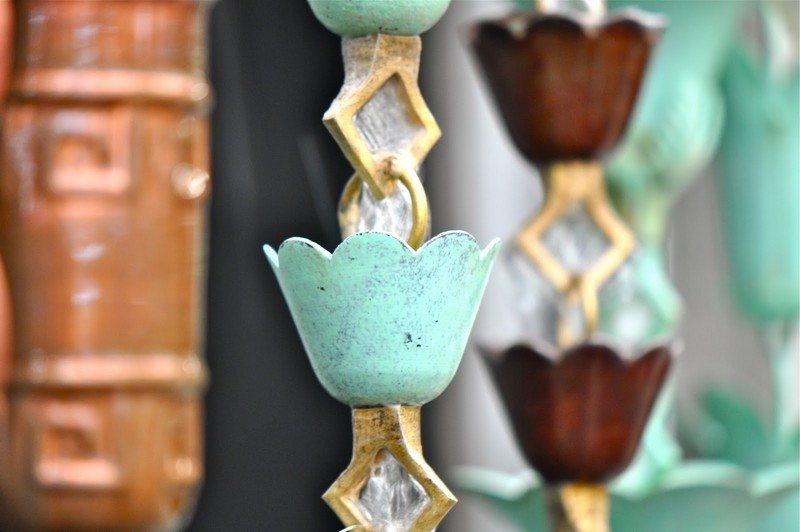
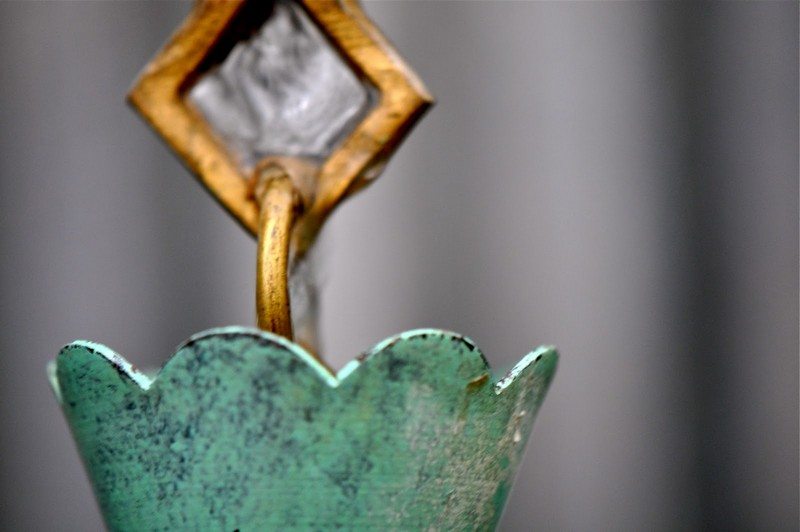
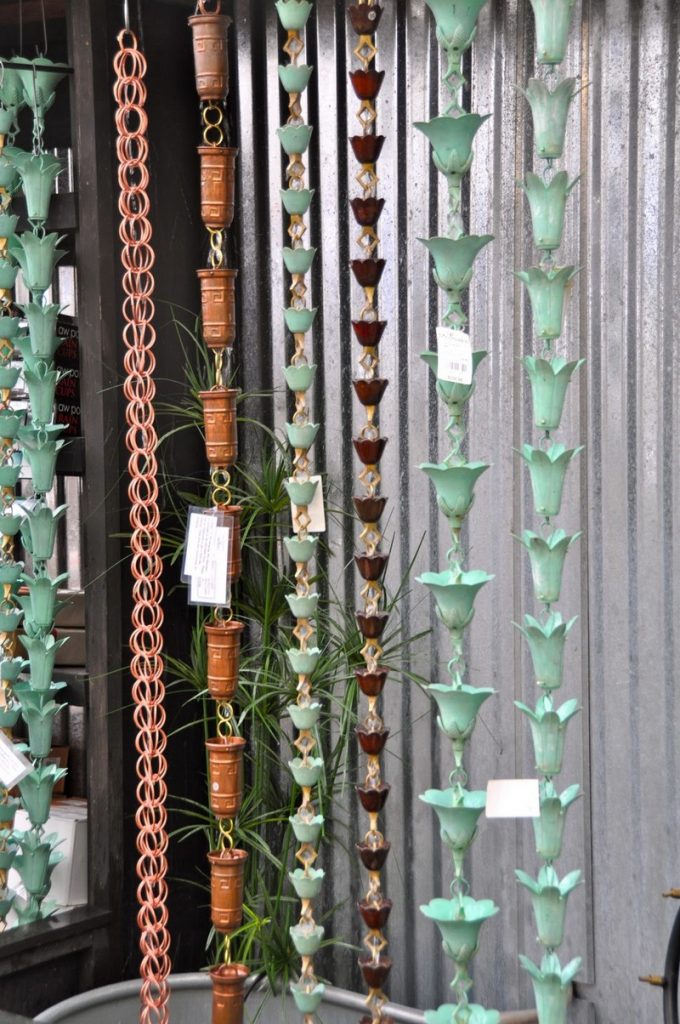
Tart Tin
Creating a rain chain from tart tins is a delightful idea for those who enjoy baking or have access to baking supplies. Tart tins, often used for making small pastries, can be repurposed into charming elements of a rain.
Connect the tins with sturdy chains or durable hooks, ensuring that each tin tilts slightly to guide the flow of water downward. For a more colorful display, paint each tin in vibrant hues or patterns. This not only protects the metal from weathering but also adds a playful splash of color to your garden or patio area.
Do you know someone who will love this idea?
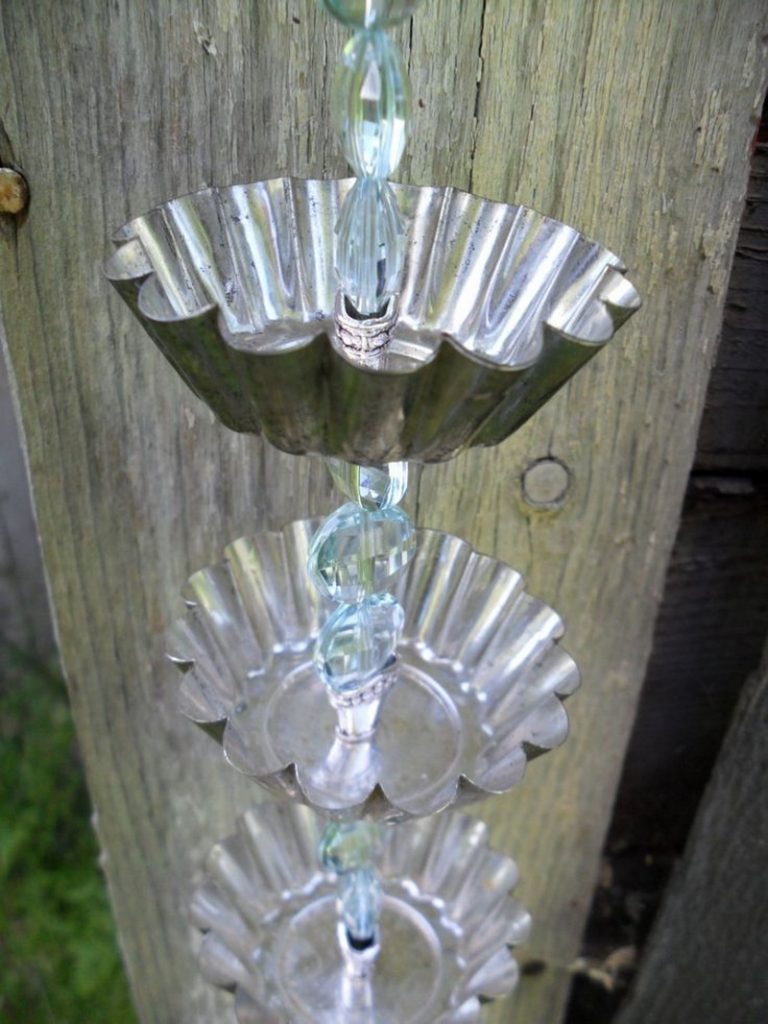
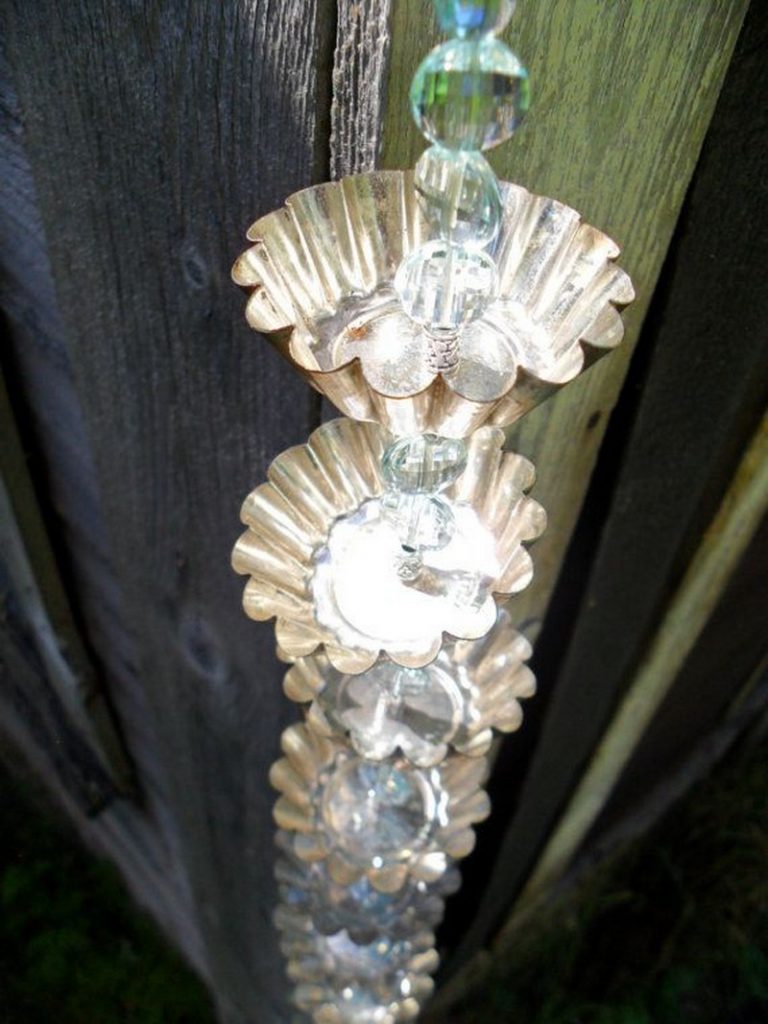
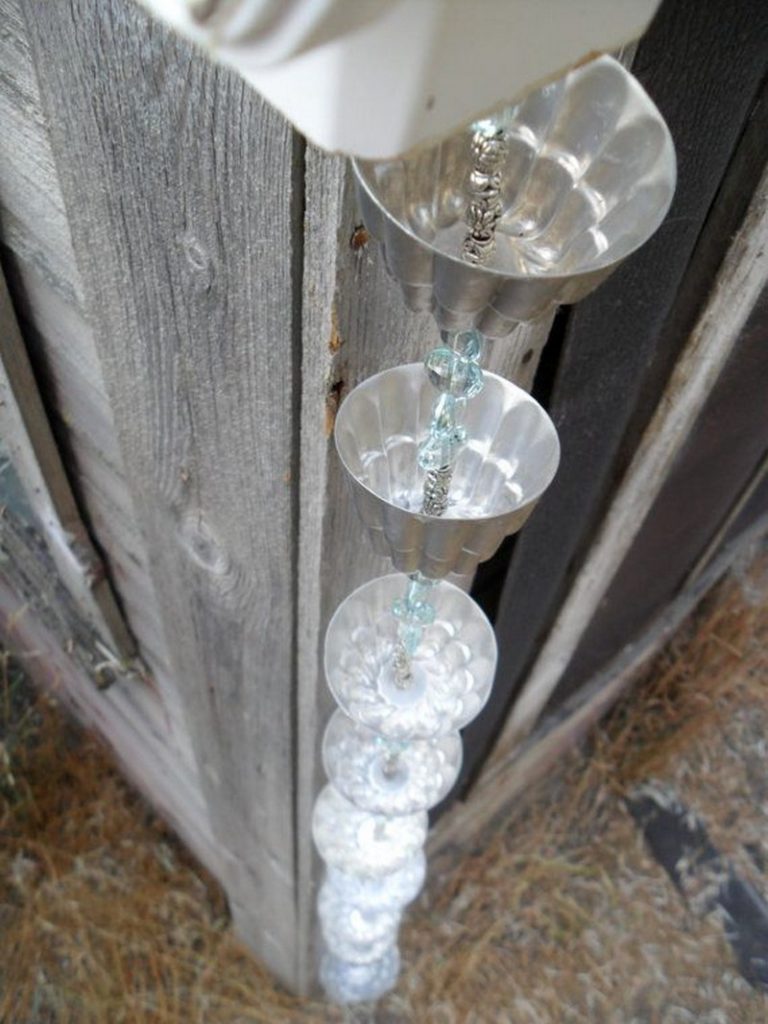
Installation Tips for Rain Chains
Installing a rain chain is a straightforward process that adds both functional and aesthetic value to your home’s exterior.
Here’s how you can ensure that your rain chain is not only a beautiful addition but also effectively channels rainwater away from your foundation.
Choose the Right Location
Select a spot where a downspout is currently used, or where directing rainwater will be beneficial to your landscape. The location should allow the rain chain to hang straight down without any obstructions. Ensure it is accessible for maintenance and visible enough to enjoy its aesthetic appeal.
Secure the Gutter Attachment
Most rain chains come with a gutter attachment piece, often a V-shaped hanger that fits into the gutter hole. Remove the existing downspout, and secure the attachment firmly in place. This piece will support the rain chain and guide water directly onto it.
Adjust the Length
Measure the height from the gutter to the ground and adjust the length of the rain chain accordingly. If the chain is too long, remove sections or links until it hangs just above ground level. If it’s too short, you might need an additional section or a decorative basin at the bottom to catch the water.
Install a Basin or Stones at the Base
To prevent erosion at the water’s landing spot, place a large basin, a decorative pot, or even a layer of stones beneath the rain chain. This will catch the water and allow it to disperse slowly into the ground or be directed elsewhere through a drainage system.
Regular Maintenance
Inspect your rain chain periodically for any signs of wear or damage. Clean it as needed to remove debris and maintain its appearance. Checking the chain seasonally ensures it functions properly and continues to beautify your home’s exterior.
Ensure Proper Alignment
Make sure that the rain chain hangs directly beneath the gutter opening to ensure optimal performance. Proper alignment prevents water from splashing sideways and ensures that the rainwater flows smoothly along the chain. Use a plumb line or a level tool to verify that the chain is hanging straight.
Protect Against Wind
In windy areas, a rain chain can sway, causing water to scatter and potentially damaging the surroundings. To stabilize the chain, secure it at the bottom to a heavy object or a fixed anchor point in the ground. This will minimize movement and keep the chain functional during windy conditions.
Consider Adding a Diverter
In regions with heavy rainfall, consider installing a rain diverter above the chain. This device can help manage water flow, ensuring the chain is not overwhelmed during intense storms. It directs excess water back into the gutter system, reducing strain on the chain and preventing overflow.
Use Corrosion-Resistant Materials
When choosing or maintaining a rain chain, opt for materials that resist rust and corrosion. Metals like copper, aluminum, and stainless steel not only add visual appeal but also withstand harsh weather conditions without deteriorating. Regularly check for signs of corrosion and clean the metal as recommended to maintain its integrity and appearance.
Enhance Nighttime Visibility
For added beauty and safety, consider installing low-voltage landscape lighting around your rain chain. Lighting can accentuate the rain chain’s features at night and create a mesmerizing water display that enhances your home’s nighttime curb appeal.
By following these installation tips, your rain chain will be an effective and enchanting feature of your home’s rainwater management system.
Conclusion
These are just some of the beautiful ideas for making a rain chain for your house. Which of these ideas did you like the most? If you have more creative ideas to add to the list, you can share them with us in the comments section below. 🙂
If you liked these ideas, you might also like these other recycled, upcycled, and repurposed ideas…








